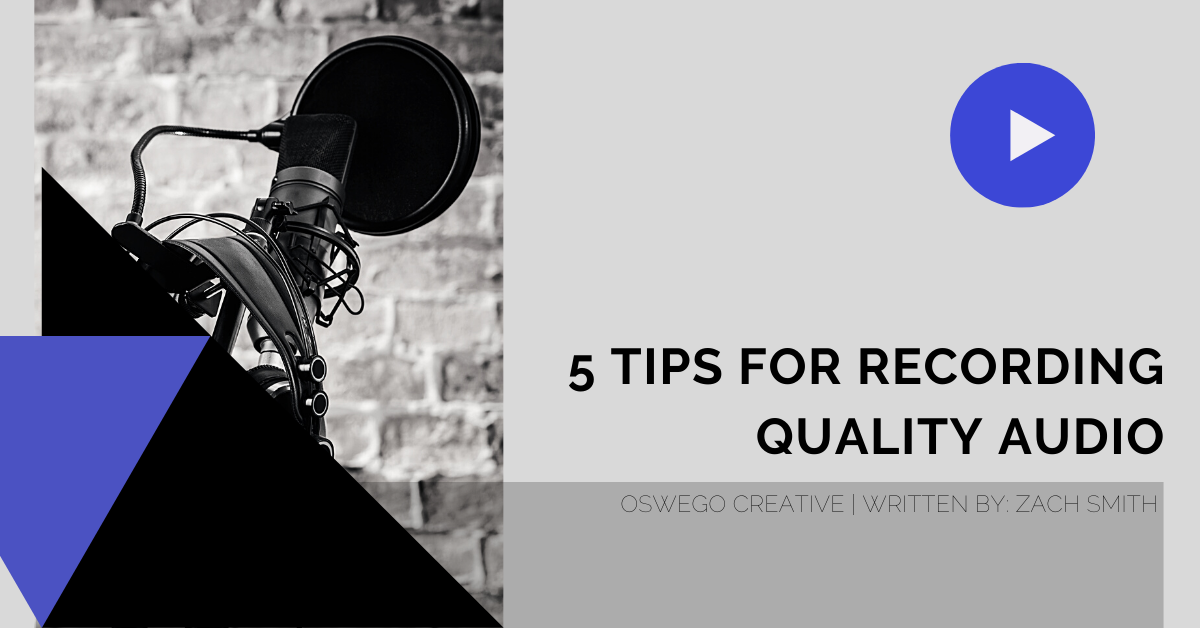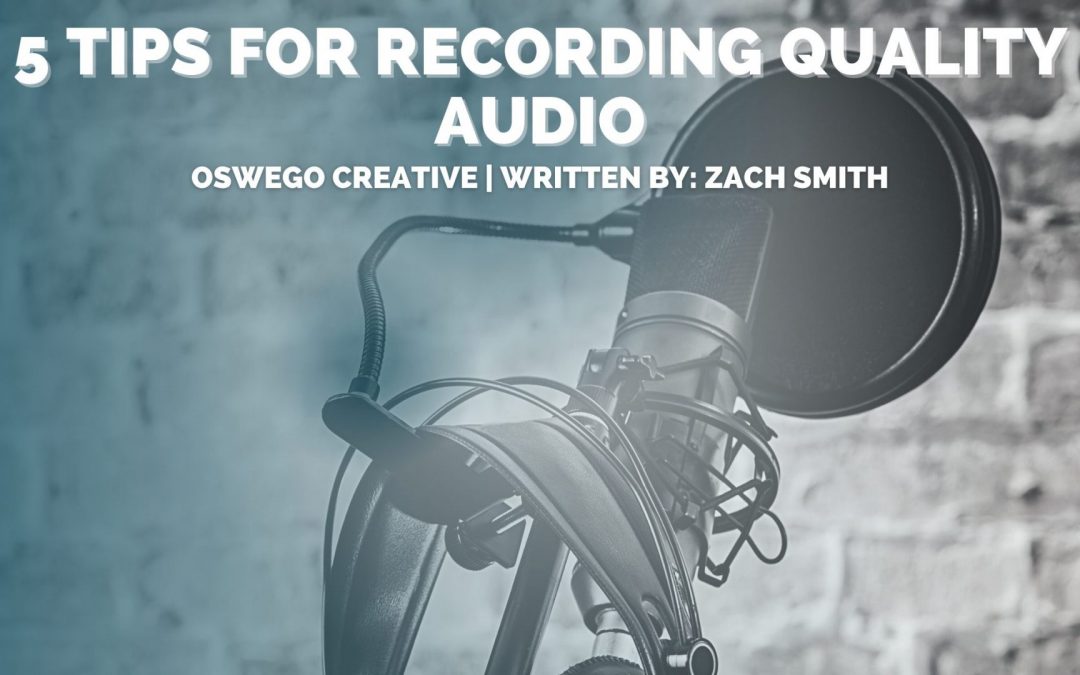When it comes to film making and video production, the story is the first priority, no questions about it, but a close second is good audio. As the audience, we can forgive, and may even overlook, errors in continuity, bad lighting, and all the other art forms that come together to make a movie. All of which, arguably, is subjective. Not bad audio though. Bad audio is simply bad audio, and nothing can take you out of a story faster than poorly recorded audio. So, let’s talk about five easy and necessary ways to not ruin your story and enhance the audio for your production!
Tip #1, Use a microphone!
Yes, your camera more than likely has an internal mic but this should not be used as your main source of audio. If anything, this audio should be used as a scratch track to help sync the audio in the edit for a multi-camera shoot, but we will get more into that later. The camera’s internal microphone just does not cut it for quality audio recording. When it comes to microphones we could take a deep dive into the differences between cardioid vs supercardioid vs hypercardioid vs omnidirectional blah blah blah and how each is best utilized in different scenarios.
For our purposes though, we will just be focusing on shotgun microphones, which fall into the category of high-directional microphones, and the lavalier microphone aka lav mic or lapel mic, which is an omnidirectional microphone.
Tip #2, 2 is 1, and 1 is none!
This fun little assuming catchphrase refers to recording 2 sources of audio vs only recording 1. Say you are setting up an interview and your only source of audio is a lavalier mic. You get your footage into post and guess what?!?!? The audio is garbage because the receiver was set to the wrong channel, or the battery died, or it fell off mid-interview, or the fabric of the subject’s shirt was extremely noisy and interferes with the audio or any of the other myriad of problems that could occur. You’re completely up the creek, with no paddle, no boat, not even a life jacket. Let’s rewind and say you were smart and set up a boom pole with a shotgun mic to capture the second channel of audio. Now you’re saved. You have at least one usable audio track even though your other failed. So, always give yourself a backup because 1 could be none and 2 will at least be 1.
Tip #3, Placement and positioning
As I stated before, shotgun mics have a highly directional polar pattern which means, the mic is most effective when it is pointed directly towards the source of the sound you want to record. If you are using a shotgun mic to record an interview, you want to point the tip of the barrel right at the person’s mouth. If you’re recording someone playing spoons, you better be pointing your shotgun mic right at that person’s thigh where they’re slapping those two spoons together! You also want to get your mic(s) close to the source. As close as the frame of the composition allows or course. Lavalier mics have an omnidirectional polar pattern which means they still should be pointed at the source of the audio but will also pick up sound from all directions. Typically, when placing a lavalier microphone you want to attach it to your subjects clothing 2 to 3 buttons from their chin. There are however, several different techniques for placing and concealing a lav mic on your subject for various situations that I am not going to get into because, well, Here’s a link for more info.
Tip #4, Monitor your audio!
Now that you’ve gone to all the trouble of appropriately setting up your boom pole with a shotgun mic and gone through the hassle of attaching/hiding your lav mic in the perfect position, it’s time to strap on those headphones. You don’t want your audio to be too loud aka over modulated and you don’t want it to be too quiet. This is where you’ll be watching and adjusting your recording levels. You want to aim for your audio to land right around -12 DB.
Let’s go back to our interview scenario. Before the real interview begins, have your subject give you an audio check to see where their voice is registering. Ask them something simple, for example, saying and spelling their name. If their normal speaking voice is spiking in between -20 DB and -12 DB you should be in good shape. You don’t want to record audio that clips over -6 DB or up to 0 DB as it will sound distorted and well, over modulated. If you record audio that is too quiet, you’ll have to raise the levels in post and it is difficult to increase the level of someone’s voice or whatever your source was without raising the levels of everything else you recorded. All the ambience and room tone aka noise floor will become too loud as you raise the levels in post production. This is a nice segway to my next tip.
Tip #5, Capture room tone
It is always a good idea to record at least 10 seconds of room tone or ambience, audio of the space without anyone talking or doing anything, to use in post. Your editors will thank you! This bit of audio will allow you or the editor to cover dead spaces in the edit or any ambient transitions between cuts. Since we are on the subject of giving your editors an excuse to sing your praises, let’s talk about syncing. You know those fancy clapper, slate things that you see on movie sets all the time. Well, they have a purpose.
If you are recording with 2 or more cameras or if you are recording your audio into a second system, meaning not directly into your camera, then you will need a sync point and that’s what the slate/marker/clapper serves as.
These are just some very basic tips on recording quality audio and how to set yourself up for success. If you would like to watch a more indepth video about audio recording then here are a couple of Youtubes that I recommend checking out:
The Basics of Recording Audio for Digital Video
5 Tips for Getting CRISPY AUDIO

Nobody wants to listen to poorly captured audio and it won’t matter how well you lit the scene or how powerful your actor’s performance is if you don’t have good audio. Just ask Christopher Nolan…
As always, have fun, be creative and go make something!

